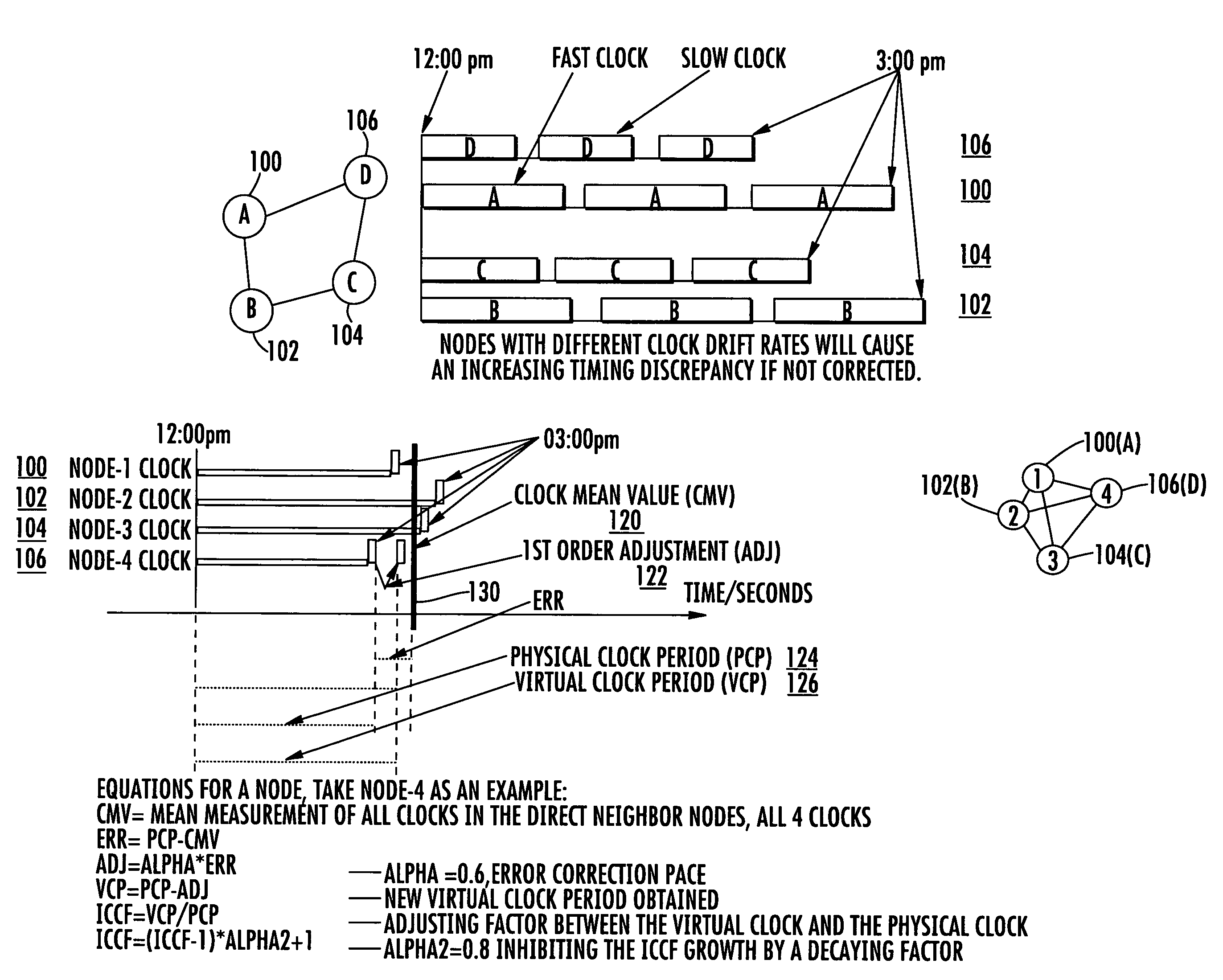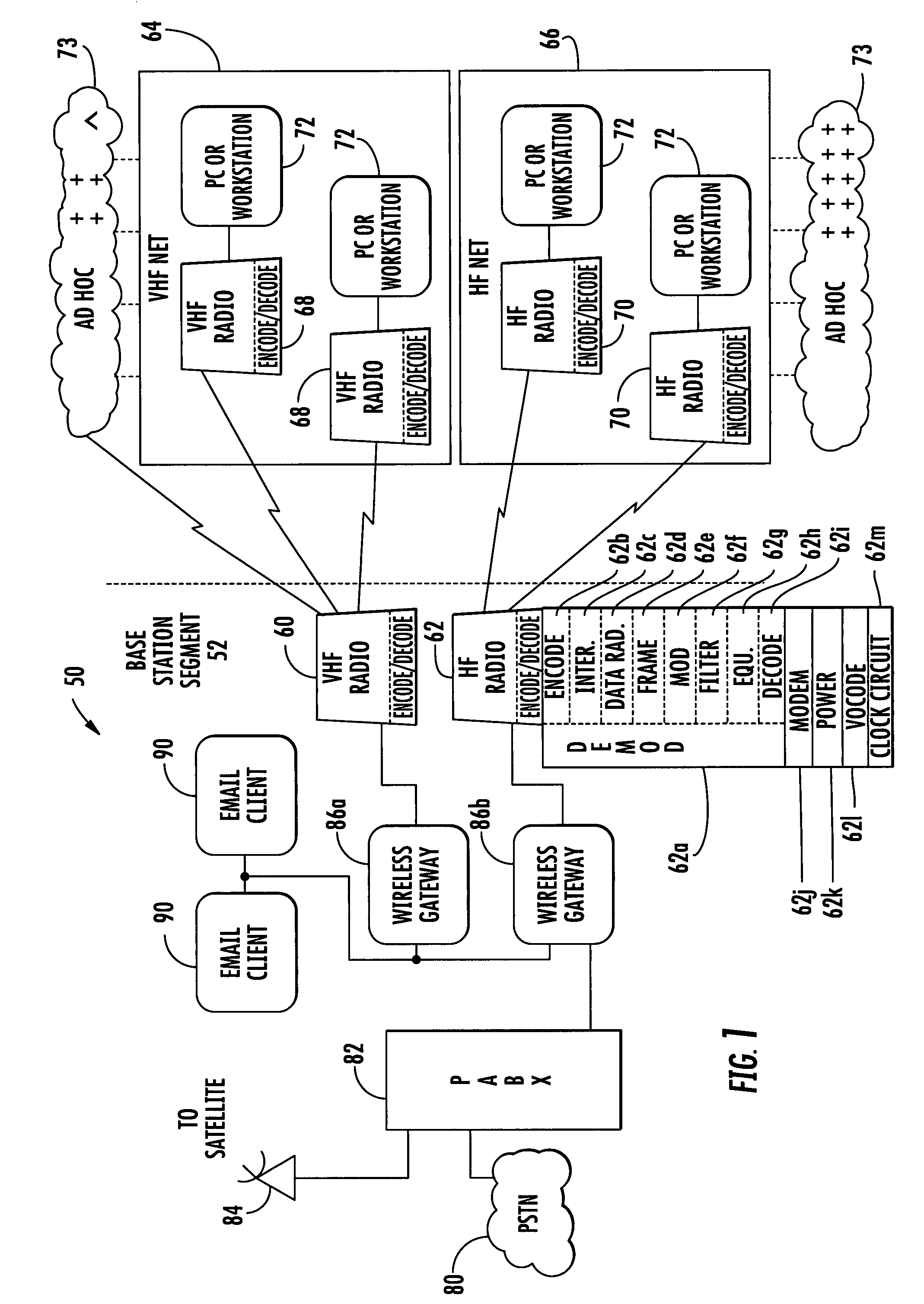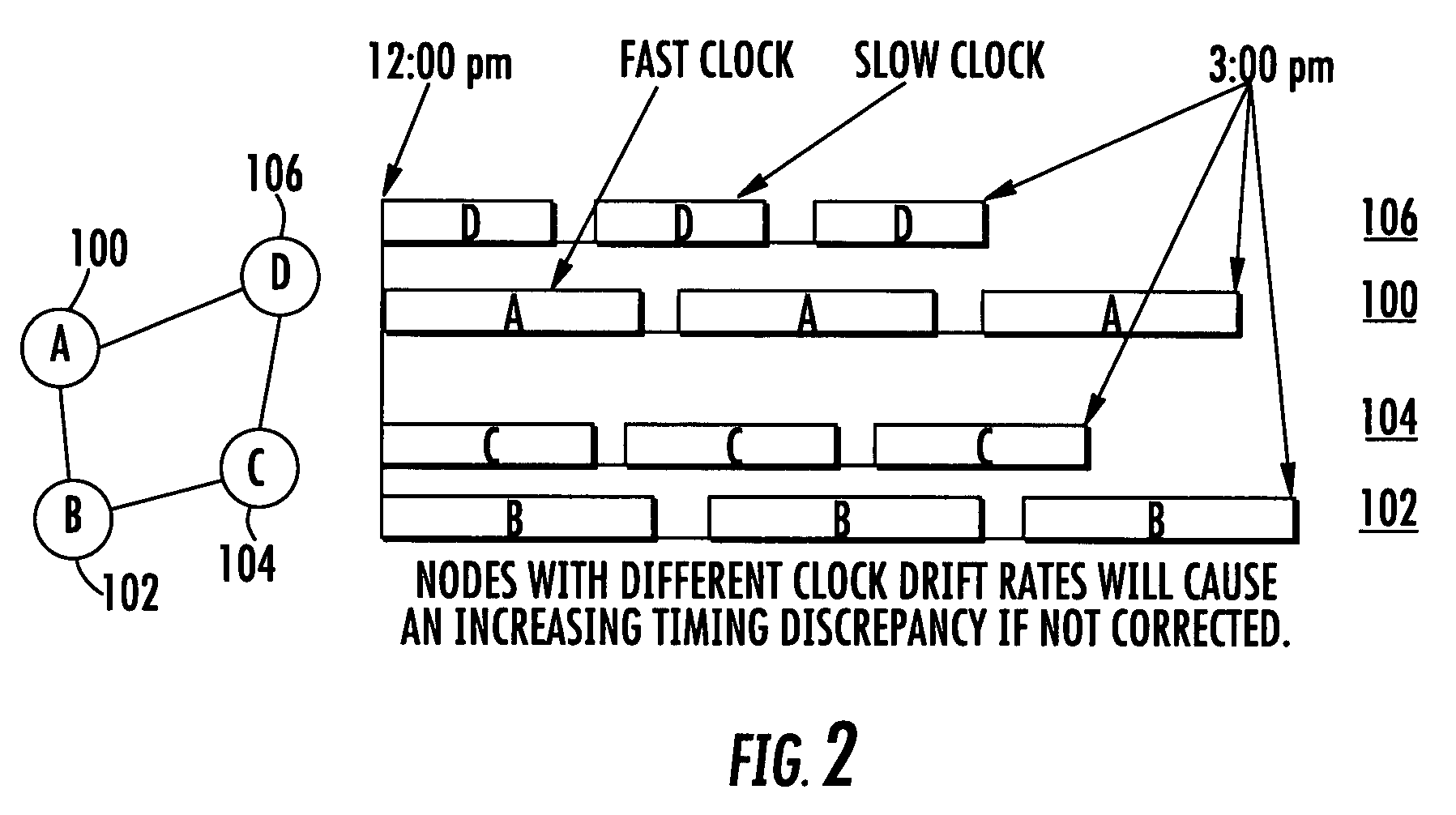TDMA mobile ad-hoc network (MANET) with second order timing and tracking
a mobile ad-hoc network and time division multiple access technology, applied in the field of mobile ad-hoc networks, can solve the problems of high network timing dispersion that requires a long guard time, limited time spent for a node to separate from the group of other nodes, and limited time span for a node to leave the group without synchronization problems
- Summary
- Abstract
- Description
- Claims
- Application Information
AI Technical Summary
Problems solved by technology
Method used
Image
Examples
Embodiment Construction
[0020]Different embodiments will now be described more fully hereinafter with reference to the accompanying drawings, in which preferred embodiments are shown. Many different forms can be set forth and described embodiments should not be construed as limited to the embodiments set forth herein. Rather, these embodiments are provided so that this disclosure will be thorough and complete, and will fully convey the scope to those skilled in the art. Like numbers refer to like elements throughout.
[0021]In accordance with a non-limiting example of the present invention, a communications system uses second order timing tracking to reduce the guard time and increase the time spent for a node to leave the group without synchronization problems. The divergence of a different clock drift rate is minimized and is distributed as an adaptive scheme.
[0022]The system uses a virtual internal clock in each node with an internal clock compensation factor. The clock drift rate becomes adjustable becau...
PUM
 Login to View More
Login to View More Abstract
Description
Claims
Application Information
 Login to View More
Login to View More - R&D
- Intellectual Property
- Life Sciences
- Materials
- Tech Scout
- Unparalleled Data Quality
- Higher Quality Content
- 60% Fewer Hallucinations
Browse by: Latest US Patents, China's latest patents, Technical Efficacy Thesaurus, Application Domain, Technology Topic, Popular Technical Reports.
© 2025 PatSnap. All rights reserved.Legal|Privacy policy|Modern Slavery Act Transparency Statement|Sitemap|About US| Contact US: help@patsnap.com



